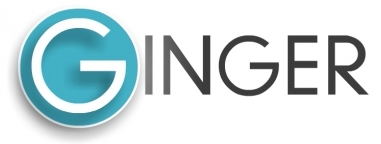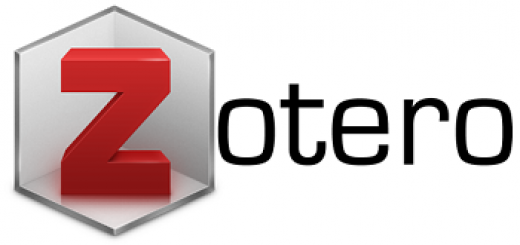AN INVESTIGATION OF THE LINGUISTIC FEATURES OF COLLABORATIVELY WRITTEN TEXTS USING GOOGLE JAMBOARD
Abstract
Keywords
Full Text:
PDFReferences
Abrams, Z. I. (2017). Collaborative writing and text quality in Google Docs. Language Learning.
Akmal. (2020). The effect of jigsaw to students' skill in writing procedure text. Journal of Linguistics, English Teaching and Education, 1(3), 64-71.
AlRouji, O. (2020). The effectiveness of blended learning in enhancing Saudi students' competence in paragraph writing. English Language Teaching, 13(9), 72. https://doi.org/10.5539/elt.v13n9p72
Argawati, N. O., & Suryani, L. (2020). Project based learning in teaching writing the implementation and students opinion. English Review: Journal of English Education, 8(2), 55. https://doi.org/10.25134/erjee.v8i2.2120
Ariyanti, A. (2016). The teaching of EFL writing in Indonesia. Dinamika Ilmu, 16(2), 263-277. https://doi.org/10.21093/di.v16i2.274
Ary, D., Jacobs, L. C., Sorensen, C., & Walker, D. A. (2018). Introduction to research in education (10th ed.). Cengage Learning.
Aulia, N. ., Zia Ul Haq, M. ., & Junaid. (2023). Effectiveness of blended learning in teaching writing of EFL students. Journal of Language Testing and Assessment, 3(1), 88–97. https://doi.org/10.56983/jlta.v3i1.467
Bafadal, M. (2015). The effectiveness of jigsaw technique in teaching writing descriptive text. Linguistics and ELT Journal, 3 (1), 117. https://doi.org/10.31764/leltj.v3i1.821.
Budiharso, T. (2006). The linguistic features of English and Indonesian essays made by EFL undergraduate students. Bahasa dan Seni, 34(1), 1-19.
Chappell, V. (2011). What makes writing so important? Retrieved November 27, 2024, from | http://www.marquette.edu/wac/ WhatMakesWritingSoImportant.shtml.
Creswell, J. W., & Creswell, J. D. (2018). Research design: qualitative, quantitative, and mixed methods approaches (5th edition). SAGE.
Crossley, S.A. (2020). Linguistic features in writing quality and development: An overview. Journal of Writing Research, 11(3), 415-443. https://doi.org/10.17239/jowr-2020.11.03.01
Dewi, A. K., & Saputra, N. (2021). Problems faced by students in writing English academic summary. Middle Eastern Journal of Research in Education and Social Sciences, 2 (2), 126-135.
Fithriani, R., Dewi, U., Daulay, S. H., Salmiah, M., & Fransiska, W. (2019). Using facebook in EFL writing class: its effectiveness from students' perspective. KnE Social Sciences. https://doi.org/10.18502/kss.v3i19.4892
Ghufron, M. A., & Hawa, M. (2015). The effect of collaborative writing technique in teaching argumentative essay writing viewed from the students' creativity. Language Circle: Journal of Language and Literature, 10(1), 49-60.
Graham, S., & Perin, D. (2016). Effective strategies to improve writing of adolescents in middle and high schools. A Report to Carnegie Corporation.
Gustiningsih, K. (2018). The utilization of jigsaw technique to improve writing ability in teaching report text. JEOPALLT: Journal of English Pedagogy, Linguistics, Literature, and Teaching, 6(1).
Handayani, E. T., & Aminatun, D. (2020). Students' point of view on the use of whatsapp group to elevate writing ability. Journal of English Language Teaching and Learning, 1(2), 31–37. https://doi.org/10.33365/jeltl.v1i2.602
Harmer, J. (2004). How to teach writing. Person Education Limited.
Hasan, F. & Muhayyang, M. (2018). The uniqueness of linguistic features in the students' written discourse in online learning. ELT Worlwide, 5(10), 73-82.
Hasani, A., Hendrayana, A., & Senjaya, A. (2017). Using project-based learning in writing an educational article: an experience report. Universal Journal of Educational Research, 5, 960-964. https://doi.org/10.13189/ujer.2017.050608.
Hudson, J. (2018). Using wikis for collaborative writing in the ELT classroom. International Journal of Pedagogy and Teacher Education, 2(2), 413. https://doi.org/10.20961/ijpte.v2i2.22906
Irmayani, I., Masruroh, L., & Wulandari, E. C. (2022). The utilization of Jamboard to improve students' writing skills in personal letter. Journal of English Education and Teaching, 6(4), 527-537.
Ismayanti, E., & Kholiq, A. (2020). An analysis of students' difficulties in writing descriptive text. E-LINK JOURNAL, 7(1), 10–20. https://doi.org/10.30736/ej.v7i1.260
Khoiriyah, K., Kairoty, N., & Aljasysyarin, A. (2022). The use of Google Jamboard for synchronous collaborative reading strategies: The students' acceptance. VELES Voice of English Language Education Society, 6, 52-66. https://doi.org/10.29408/veles.v6i1.5010.
Lingard, L. (2021). Collaborative writing: strategies and activities for writing productively together. Perspectives on Medical Education, 10(3), 163–166. https://doi.org/10.1007/S40037-021-00668-7
Marwah, M., M. Pd. (2023). Using Google Jamboard to teach writing skill. Journal of English Education and Linguistics, 3(2), 20–32. https://doi.org/10.56874/jeel.v3i2.914
Maulida, D. S., Rahman, M. A., Handrianto, C., & Rasool, S. (2022). A review of the blended learning as the model in improving students` paragraph writing skills. Abjadia : International Journal of Education, 7(1), 59–72. https://doi.org/10.18860/abj.v7i1.15901
McNamara, D. S., Crossley, S. A., & McCarthy, P. M. (2010). Linguistic features of writing quality. Written Communication, 27(1), 57-86. https://doi.org/10.1177/0741088309351547
Mustafa, A., Arbab, A., & Sayed, A. (2022). Difficulties in academic writing in English as a second/foreign language from the perspective of undergraduate students in higher education institutions in Oman. Arab World English Journal, 13(3), 41-53. https://doi.org/10.24093/awej/vol13no3.3.
Murtiningsih, R. S. (2016). Collaborative writing in an EFL context. Journal of Foreign Languange Teaching and Learning, 1(1). https://doi.org/10.18196/ftl.118Mustafa et al.
Okmawati, Mike & Tiarina, Yuli. (2022). A Comparative Study on the Implementation of padlet and jamboard toward students' motivation. ICLLE-5, ASSEHR 709, 367–375. https://doi.org/10.2991/978-2-494069-85-5_39.
Peter, J., & Singaravelu, G. (2021). Problems in writing in English among high school learners. Aegaum Journal, 8, 1502-1515.
Putri, N., & Aminatun, D. (2021). Using Facebook to practice writing skills: what do the students think? Journal of English Language Teaching and Learning, 2(1), 45–50. https://doi.org/10.33365/jeltl.v2i1.852
Ramadhani, T. A. (2022). Improving reading skill using jamboard for senior high school students. RETAIN : Journal of Research in English Language Teaching, 10(01), 179–186.
Rashid, A. A., Yunus, M. M., & Wahi, W. (2019). Using padlet for collaborative Writing among ESL learners. Creative Education, 10(03), 610–620. https://doi.org/10.4236/ce.2019.103044
Rezeki, Y. S., & Rahmani, E. F. (2021). The implementation of collaborative writing technique to improve students' writing performance and soft skill. Voices of English Language Education Society, 5(2), 81–94. https://doi.org/10.29408/veles.v5i2.3614
Salsabila, Z. (2023). The implementation of Jamboard in the teaching reading comprehension of learning descriptive text for seventh grade. Prosodi, 17(1), 128–137. https://doi.org/10.21107/prosodi.v17i1.14775
Susanti, A., & Agung, E. L. (2023). Improving students' writing ability in personal recount text using Google Jamboard. JOLLT Journal of Languages and Language Teaching, 11(4), 912-922. https://doi.org/10.33394/jollt.v11i4.8520.
Syarifah, E. F., & Emiliasari, R. N. (2019). Project based learning to develop students ability and creativity in writing narrative strory. Indonesian EFL Journal, 5(1), 85. https://doi.org/10.25134/ieflj.v5i1.1627
DOI: https://doi.org/10.18860/prdg.v7i2.30777
Refbacks
- There are currently no refbacks.

This work is licensed under a Creative Commons Attribution-ShareAlike 4.0 International License.
Member of:
Indexed by:
Editorial Office
Department of English Literature
Faculty of Humanities, Universitas Islam Negeri Maulana Malik Ibrahim Malang
Jalan Gajayana 50 Malang, Jawa Timur, Indonesia 65144
Phone (+62) 341 551354, Facsimile (+62) 341 572533
e-mail: paradigm@uin-malang.ac.id

PARADIGM: Journal of Language and Literary Studies by Department of English Literature is licensed under a Creative Commons Attribution-ShareAlike 4.0 International License.
Based on a work at http://ejournal.uin-malang.ac.id/index.php/paradigm.
View My Stats | Follow Us on Instagram






